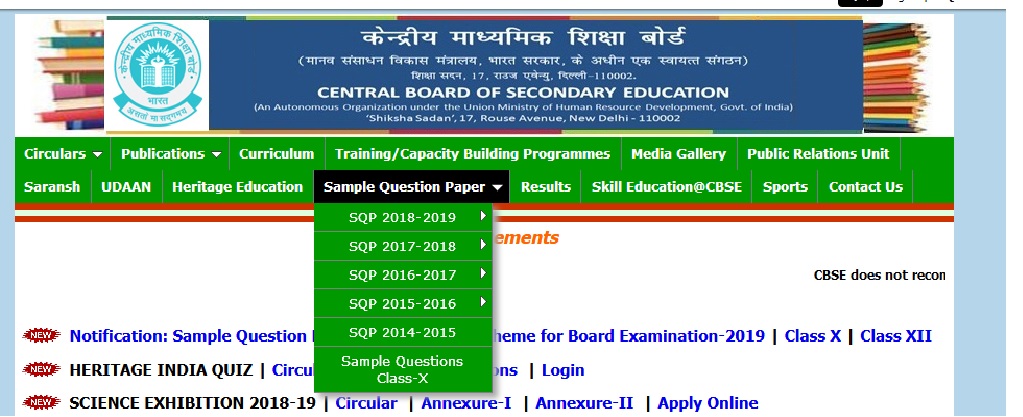CBSE Academic Class XII Economics Sample Question Paper 2015-16
Name of the Board : CBSE Academic
Class : XII STD
Subject : Economics
Year : 2015-16
Website : http://cbseacademic.in/SQP_CLASSXII_2015_16.html
Download Sample Question Paper : https://www.pdfquestion.in/uploads/8034Economics.pdf
Download Marking Scheme : https://www.pdfquestion.in/uploads/8034EconomicsMS.pdf
CBSE Economics Sample Question Paper
Time : 3 Hours
Maximum Marks : 100
Related : CBSE Academic Class XII Dance – Bharatnatyam & Manipuri & Mohiniyattam & Odissi Sample Question Paper 2016 : www.pdfquestion.in/8032.html
Instructions
1. All questions in both sections are compulsory. However, there is internal choice in some questions.
2. Marks for questions are indicated against each question.
3. Question No.1-5 and 16-20 are very short answer questions carrying 1 mark each. They are required to be answered in one sentence.

4. Question No.6-8 and 21-23 are short answer questions carrying 3 marks each. Answers to them should not normally exceed 60 words each.
5. Question No.9-11 and 24-26 are also short answer questions carrying 4 marks each. Answers to them should not normally exceed 70 words each.
6. Question No.12-15 and 27-30 are long answer questions carrying 6 marks each. Answers to them should not normally exceed 100 words each
7. Answers should be brief and to the point and the above word limit be adhered to as far as possible.
Model Questions
Section A : Microeconomics
1. If it is given that the total variable cost for producing 15 units of output is 3000 and for 16 units is 3,500. Find the value of Marginal Cost.
2. Ceteris Paribus, if the government provides subsidies on electricity bills, what would be the likely change in the market demand of desert coolers? (1)
3. Which of the can be referred to as ‘point of satiety’? (1)
i) Marginal Utility is negative iii) Total Utility is rising
ii) Marginal utility is zero iv) Total Utility is falling
4. Which of the following is an assumption of Production Possibility Frontier? (1)
i) Resources are not fully employed.
ii) Resources are not equally efficient for production of the two goods.
iii) Resources are not efficiently employed.
iv) Resources available are not fixed.
5. State any two central problems under ‘problem of allocation of resources’. (1)
6. ‘Supply curve is the rising portion of marginal cost curve over and above the minimum of
Average Variable cost curve’. Do you agree? Support your answer with valid reason. (3)
7. Explain ‘black marketing’ as a direct consequence of price ceiling. (3)
OR
Explain the concept of ‘buffer stock’ as a tool of price floor.
8. Explain any two sources of restricted entry under monopoly. (3)
9. Comment upon the degree of elasticity of demand for Good X, in the following given situations, if the price of the commodity rises from 5 per unit to 7 per unit and the quantity demanded falls from 20 units to 16 units :
i) Using the total household expenditure method,
ii) Using proportionate method. (4)
10. ‘Higher indifference curve represents higher level of satisfaction to the consumer’. Explain the statement, also state the underlying assumption related to this property of indifference curve. (4)
OR
A consumer consumes two goods X and Y. Explain what will happen if MUx/Px is greater than MUy/Py?
11. Define Marginal Opportunity Cost. Explain the concept with a hypothetical numerical example. (4)
12. a) What is meant by price rigidity, under oligopoly. (2)
b) Elaborate the implication of the conditions of equilibrium of a firm. (4)
13. a) Distinguish between stock and supply.
14. Suppose the demand and supply curves of a Commodity-X is given by the following two equations simultaneously Qd = 200 – p Qs = 50 + 2p
i) Find the equilibrium price and equilibrium quantity.
ii) Suppose that the price of a factor of production producing the commodity has changed, resulting in the new supply curve given by the equation Qs’ = 80 +2p
Analyse the new equilibrium price and new equilibrium quantity as against the original equilibrium price and equilibrium quantity. (3+3)
15. Show diagrammatically the conditions for consumer’s equilibrium, in Hicksian analysis of demand.
Section B: Macroeconomics
16. If an economy is to control recession like most of the Euro-Zone nations, which of the following can be appropriate (1)
i) Reducing Repo Rate ii) Reducing CRR iii) Both (i) and (ii) iv) None of (i) and (ii)
17. Which of the following agency is responsible for issuing 1 currency note in India? (1)
i) Reserve Bank of India. ii) Ministry of Commerce iii) Ministry of finance iv) Niti Aayog
18. Flow of Goods & services and factors of production across different sectors in a barter economy is known as (1)
i) Circular flow ii) Real flow iii) Monetary Flow iv) Capital Flow